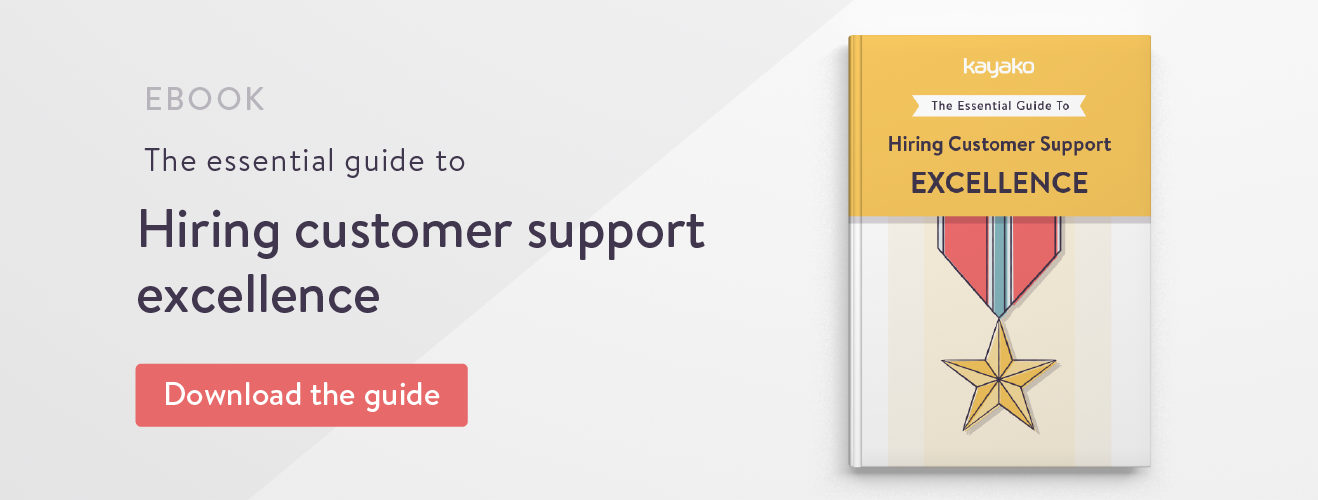What makes a good customer service
Every company will tell you customers are their #1 priority, but few “walk the walk” when it comes to delivering the kind of remarkable service that keeps customers coming back for life.
When I think back to my own experiences, only a few times have I truly been blown away by customer service and made to feel like a truly valued customer, instead of just another ticket that needs to be dealt with.
Customer service is overlooked in many companies. Often, it’s customer service that can make or break a company and it’s important that it stretches far beyond one department.
In this post we’ll dive into why customer support is extremely important for every part of your business.
Good vs great customer service
It’s no secret that we as consumers love great customer service. Yet many companies settle for ‘good’ customer service instead of going the extra mile to keep their customers happy.
The main difference between “good” customer service and “great” customer service is that, in the former, you are doing the bare minimum to keep the customer satisfied. Whereas with great customer service, you are not only doing what it takes to make them satisfied – you are going above and beyond to keep customers loyal.
As Tony Hsieh from Zappos says: “Rather than spend a lot of money on marketing, we take most of the money we would’ve spent on paid advertising and re-invest it in customer experience.”
“We really don’t think that customer service is an expense that you should try to minimize, it’s really an investment in your brand.”
Great customer service doesn’t only put a smile on the customer’s face, it helps you understand your customer, define your company, and impacts your bottom line.
The White House Office of Consumer Affairs found that on average, loyal customers are worth up to ten times as much as their first purchase and that it’s six to seven times more expensive to acquire a new customer than it is to keep a current one.
Kayako recently ran a survey and found that 60% of consumers would be unlikely or very unlikely to return to a company that had provided them bad service in the past, even if a trusted friend recommended that the service had improved.
When it comes to customer service, don’t settle for good – exceed expectations. If you want to beat your competitors, often the best solution is to out-support them.
Customer service isn’t one department
If you want to make the transition from good to great customer service and keep your customers coming back time after time, the first step is to stop looking at customer service as one department within your company.
At some point every member of staff is involved in customer service, whether it’s the designer improving customer experience; a developer fixing a pesky bug or the front line support staff taking the calls, answering the tweets and replying to emails.
As Teespring VP Jack Altman explains over at his blog: “Great customer service is not just a department, it’s a characteristic of a company that focuses on its customer’s needs and works backwards from there.”
Customer support can fuel all areas of your business and help them achieve their goals. At Wufoo they use a technique known a support driven development where their engineers help out with support tickets for a few hours every couple of weeks.
Wufoo co-founder, Kevin Hale describes support driven development as: “Injecting humility, accountability and responsibility into the development process by making sure the creators are also the supporters. If I’m going to build this, how does it affect me later when I have to support the user?”
This helps the teams work on the right things and focus on solving the problems their customers face.
Knowledge from customer support can also help out sales and marketing teams with their goals. Not only does great customer service keep current customers loyal, it can also inspire word of mouth. This is why companies with very happy customers tend to grow quickly and exponentially.
For an example of outstanding customer service generating word of mouth, look no further than Sir Richard Branson talking about a rival airline’s amazing customer service over on Entrepreneur:
An Executive Club passenger left his leather coat in the airport lounge. He rushed to the front of the plane and asked if he could get it. “Sorry, sir, too late,” replied a member of the cabin crew. “But don’t worry. I’ll tell the ground crew and they’ll have it sent to you.” He was convinced he’d never see his favorite coat again.
Seven and a half hours later, when the flight arrived in New York, an agent met him at the door of the aircraft with his coat. They’d put it on a Concorde flight that beat his slower 747 across the Atlantic! (Of course, British Airways can no longer pull off that trick, since the Concorde is no longer in service.)
The airline could have put the coat on a later flight and the customer would have been just as grateful. But going the extra mile builds massive customer loyalty and brand-enhancing benefits. You can be sure that passenger talked up the airline for years, and now even the founder of a rival company is telling the tale. How great is that?
Making support work for all areas of your business
There are various ways to make support work for all areas of your company. At some companies this means that everyone across the team – no matter what their role – jumps in and helps out with support.
For some companies, everyone on support is simply a way to work through tickets before they reach tipping point and it becomes a full-time role. For others, it becomes a part of the company culture.
At Basecamp they originally pulled in everyone to help out with support tickets due to demand, but as Emily Triplett Lentz explains, they soon found more benefits than simply getting tickets answered faster: “Putting designers and programmers and everyone else in direct contact with customers isn’t about putting out fires; it’s about fire safety. It’s about having the kinds of conversations that lead to better products in the first place.”
A typical business hears from 4% of its dissatisfied customers, so this type of proactive support can be an amazing tool to not only fix problems before they arise but to keep customers loyal.
I’ve experienced this “all hands on” approach with one company myself. We’d have all incoming support tickets pop up in a Slack channel and as they came in whoever spotted each new ticket first would jump in and help out.
This was a great way to keep everyone in the team in the know with customer issues and keep motivation high across the team, rather than focusing purely on our day-to-day roles. Developers, marketers and the whole team were focused on making the current experience as amazing as possible for our customers.
Mel Choyce is a design engineer at Automattic, who take a different approach to support. At Automattic all new employees spend time on support when they first join the company which is hugely beneficial to new team members, as Mel explains: “While doing support, you actually get to experience your customers, in the wild, interacting with your product or service. You get a sense for their workflows, for their habits, and most importantly: where you fall short.”
Getting thrown into customer support pushes new employees to dive right in and learn more about their company and customers from the front line. This helps them to become masters of their product and figure out how they can have the most impact.
Other companies will take a more traditional approach where customer support is handled specifically by a support department – and this can work wonderfully too.
With this approach, it’s essential that the support teams have procedures in place to pass on any feedback or learnings to the relevant teams across the company.
There’s no one-size-fits-all solution to making customer service work across every department of every company. Whether you take the traditional approach or an “all hands on” approach, the key thing to remain mindful of is how you can utilize the learnings from customer support across all areas of the business.

